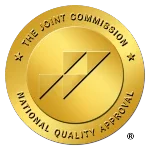Our Evidence Based Approaches to Overcoming Trauma at Catalina
When you think about the traumatic experience you lived through, where do you feel the tension stored in the body? Many people with trauma histories have experienced involuntary shaking when memories of their trauma surface. These are known as neurogenic tremors, and they can play a critical role in your recovery from PTSD.
Therapeutic neurogenic tremors trigger rapid muscle contraction followed by relaxation of the tension the body held for so long. As the body releases that tension, it often leads to reduced stress and you may be able to feel the release spreading through the body.
With much of the tension gone, you might experience an uptick in quality of life and a lessening of anxiety.
This is a new evidence-based approach to overcoming your trauma and Catalina Behavioral Health is proud to feature it as part of a robust inpatient treatment program. Keep reading to learn more about how this therapeutic approach works and how you can benefit from it today.
Confidential Trauma and PTSD Assessment
What are Neurogenic Tremors and How Do They Impact PTSD Treatment?
In short, neurogenic tremors are the result of the body’s innate response to the experience of long-term and extreme stress. It’s a normal body function for the experience of stress to coincide with excessive tension in the muscles. Muscle contraction and relaxation happen as stress peaks and then fades.
But what happens if your body is under chronic stress because you have experienced significant trauma that leads to an entirely new stress and trauma response?
How to Trigger Rapid Muscle Contraction
While a hyper-aroused fight-or-flight response from the nervous system is a common part of a PTSD diagnosis, you won’t always experience symptoms. There will be times when you don’t think about your trauma at all and don’t experience the side effects of sustained anxiety.
Instead, you can set these neurogenic tremors in motion by stimulating trauma triggers in a therapeutic setting. You might be asked to talk about what you experienced, describe what happened to you, or talk about your experiences with an experienced therapist who can guide you safely.
With this trigger in place, you might start to experience the central nervous system’s innate response. The neurogenic tremors will begin involuntarily which leads you into the treatment for your physical and emotional health.
Alternatively, your therapist can lead you through a series of exercises designed to fatigue the muscles and stimulate the tremors.
Why the Central Nervous System’s Innate Response Heals PTSD

There has long been a tide of experts who believe that trauma is stored in the body physically. The tension held in your muscles which remain coiled and ready to spring into action with your increased fight or flight response can lead to severe shock, chronic pain, and a flood of stress hormones in the body.
The freeze response and fawn response, the two other forms of trauma response reactions, also can come with reactions that produce an over-excited adrenal state.
Neurogenic tremors induced in a therapeutic setting start by discharging excessive tension in a safe and controlled environment.
When therapeutic neurogenic tremors begin, you experience heightened muscle contraction and relaxation. As the episode ends, the physical tension in your muscles is decreased and you might experience a relaxed state where you can let go of that tension held in the muscles.
The result is emotional trauma is no longer stored in the body and the central nervous system can go back to its regular job.
Trauma Release Exercises to Stimulate Therapeutic Neurogenic Tremors
Reliving traumatic events can be one way to initiate the central nervous system’s automated response, but it might not be the safest or most therapeutic way to deal with fight, flight, or freeze responses. A trained therapist can instead walk you through a series of physical exercises that can stimulate these tremors to begin.
Your therapist will walk you through a prescribed set of stretches and activities that are designed to get you to a point where neurogenic tremors are induced. You will stretch connective tissues throughout the body and fatigue the muscles to mimic the physical symptoms of the stress response.
The idea is that you will wear out the muscles in the lower body until you start to shake. At this point, you can then work to release tension, lower high blood pressure, and release some of the experience of chronic stress hormones related to trauma.
These exercises are simple. While you could walk through them on your own once you learn them, it’s best to leave it for a clinical setting. You never know what tremors turn up in your emotional health, and a clinician can help you process difficult feelings and memories that surface.
How Do Therapeutic Neurogenic Tremors Improve Physical and Emotional Health?

The good news is that therapeutic neurogenic tremors play a pivotal role in your nervous system, the physical tension in the body, and your emotional healing process. Catalina believes in the science that supports this treatment modality. Here is a quick overview of how the treatment impacts every aspect of your health.
Relief for Chronic Pain and Other Physical Symptoms
Part of the reason that neurogenic tremors work is because they aim to release the tension in the body. Holding on to that chronically stressed feeling can leave muscles aching and tired throughout your daily life. If you can initiate neurogenic tremors following the prescribed exercises, your body will be able to release tension.
The result is often that chronic pain associated with an anticipatory stress response is released. It can also reduce high blood pressure and improve sleep. You may also be able to decrease your risk of some serious conditions associated with tremors including tobacco and alcohol abuse, hypertension, obesity, and more.
You might leave your therapy session feeling more fatigued than usual while also being in a more relaxed state. The state of being constantly alert due to the trauma response is decreased, giving you excess energy to focus on the emotional aspect of healing from trauma and PTSD.
Get Effective Trauma Treatment Options
Letting Go of Emotional Trauma with Trauma Release Exercises
Deciding to undergo therapeutic neurogenic tremor protocols can have a substantial impact on the brain and your perceived quality of life. Studies show that people who follow the protocols under the guidance of an experienced therapist are more likely to experience increases in all of these areas:
- Physical health
- Mental and emotional health
- Stress evaluation
- Life enjoyment
- The overall quality of life
If you have been struggling with the long-term effects of PTSD and CPTSD, you might have noticed that your life isn’t as enjoyable as it once was. The nervous system’s response to trauma triggers can leave you feeling drained and tired. Restore your quality of life with this evidence-based treatment so that you can make new memories.
Keep in mind that this can be an intense process for anyone who is struggling with PTSD or complex PTSD after repeated trauma. The exercises should only be done under the guidance of a therapist who is experienced and capable of walking you through the emotions that this practice brings up.
Why Inpatient Treatment at Catalina is the Right Option

Many people who are struggling with the long-term effects of traumatic experiences on their minds and bodies are extremely nervous about the prospect of treatment. This built-up energy in the body can be quite serious and lead to the resurfacing of the memories of your trauma.
This is why we recommend that you enroll in inpatient treatment at Catalina.
A residential treatment experience allows you to rest easy, knowing that you are in a safe and controlled environment. You aren’t at risk for substance misuse, negative coping skills, or anything else that could pose a danger to your well-being. We can make sure you are comfortable and well taken care of while working through the protocol.
Once you start to get a handle on your trauma experiences, you can transition to partial hospitalization or intensive outpatient care. Our approach is evidence-based and helps support you at every level of care.
Up To 100% of Rehab Costs Covered By Insurance
Reach Out to Us Today to Start Healing from Trauma and PTSD
Are you ready to experience the life-changing effects of therapeutic neurogenic tremors induced in a clinical setting? The body’s ability for self-healing is extremely powerful and our team at Catalina can help you organically restore your sense of peace given the traumatic experiences your body has held for so long.
Our friendly admissions team is ready and waiting to answer your questions about treatment and this specific modality practiced by our experienced therapists. Reach out today to confidentially verify your insurance benefits and secure a spot in our program!
References
- Lynning, M., Svane, C., Westergaard, K., Bergien, S. O., Gunnersen, S. R., & Skovgaard, L. (2021). Tension and trauma releasing exercises for people with multiple sclerosis – An exploratory pilot study. Journal of traditional and complementary medicine, 11(5), 383–389.
- Handforth, A., & Parker, G. A. (2018). Conditions Associated with Essential Tremor in Veterans: A Potential Role for Chronic Stress. Tremor and other hyperkinetic movements (New York, N.Y.), 8, 517.
- Berceli, D., Salmon, M., Bonifas, R., & Ndefo, N. (2014). Effects of Self-induced Unclassified Therapeutic Tremors on Quality of Life Among Non-professional Caregivers: A Pilot Study. Global advances in health and medicine, 3(5), 45–48.





